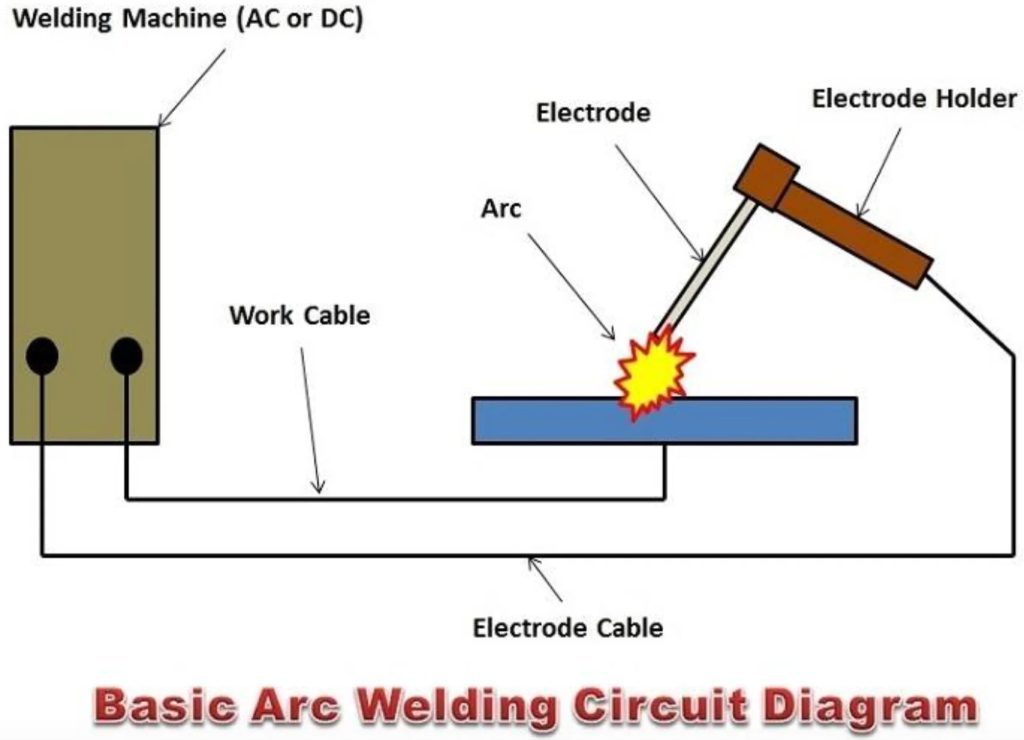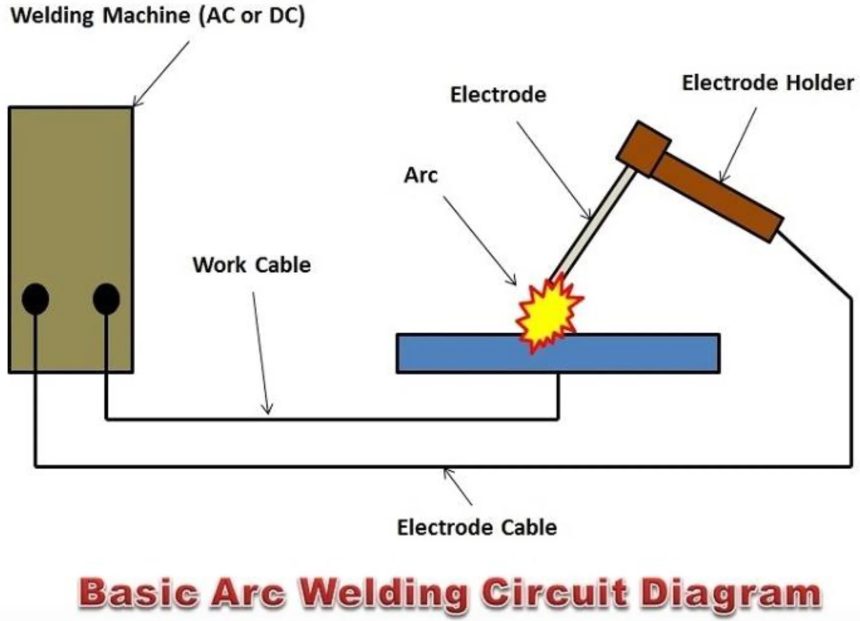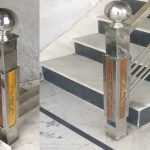Arc welding is a welding process that involves melting two metals to join them together. It utilizes electricity to generate high levels of heat, which in turn melts the metals, creating a molten pool. As the metals cool and solidify, they fuse together, forming a single material. This fusion is the key factor behind the strength and durability of welded structures.
Arc welding is the process of melting two metals together.
Welding Town
How does arc welding work?
Arc welding involves the utilization of electricity to establish a circuit between two metals: the base metal and the electrode, which is connected to the welding gun. By separating the electrode from the base metal, the circuit is interrupted, resulting in the formation of an electric arc. This arc generates an incredibly high heat, capable of reaching temperatures as high as 11,000 degrees Fahrenheit!
The molten pool of metal formed during arc welding is crucial for creating the weld, but it can be influenced by gases and impurities present in the surrounding air. To safeguard the weld during the process, a Welding Shield is employed, which employs inert gas as a protective measure. The method of gas supply depends on the specific type of arc welding being utilized. In some cases, the shielding gas is externally supplied through the welding machine, while in other cases, it is provided through an electrode that has a flux coating.
Arc welding can be accomplished through various methods, and the most commonly used processes include:
- Metal inert gas welding (MIG): MIG welding involves the use of a consumable electrode wire that continuously feeds through a welding gun. An inert gas shield, such as argon or a mixture of gases, is also supplied to protect the weld.
- Tungsten inert gas welding (TIG): TIG welding employs a non-consumable tungsten electrode to create the arc. A separate filler metal may be used if necessary. An inert gas shield, typically argon, is provided to protect the weld zone.
- Flux-cored arc welding (FCAW): FCAW employs a tubular wire electrode with a flux core. The flux acts as a shielding agent and may also contain additional components to improve the welding process.
- Shielded metal arc welding (SMAW): SMAW, also known as stick welding, employs a consumable electrode coated in flux. As the electrode melts, the flux creates a shielding gas to protect the weld.
- Plasma arc welding: Plasma arc welding utilizes a highly focused plasma arc that is created by passing gas through a constricted opening. This process provides precise control and can be used for various materials and thicknesses.
These different methods offer versatility and are chosen based on the specific requirements of the welding application.
When it comes to arc welding, there are fundamental aspects that remain constant regardless of the specific welding process being used:
- Similar melting point: The materials being welded should have comparable melting points. If one material melts before the other, it can lead to a failed weld.
- Power supply: Power can be provided through alternating current (AC) or direct current (DC). The type of power supply used can impact the welding settings, so it’s important to check the specifications before starting.
- Power and temperature: The amount of power applied determines the temperature of the arc. Equipment manufacturers usually provide standard settings, but voltages may need adjustment based on the requirements of the welding job.
- Choice of electrode: The selection of the electrode has a significant impact on the welding outcome. Different electrodes are designed for specific applications and materials.
- Base metal preparation: Always clean the base metal using a metal brush or grinder before welding, even if the welding process is suitable for contaminated base metals.
- Safety precautions: Safety is paramount in arc welding due to the powerful electricity and high temperatures involved. Wear appropriate safety gear and have a suitable fire extinguisher nearby.
The diagram below provides a basic illustration of how arc welding works:

This overview highlights key considerations and practices that apply across various arc welding processes.
electricity to generate high levels of heat, which in turn melts the metals, creating a molten pool. As the metals cool and solidify, they fuse together, forming a single material. This fusion is the key factor behind the strength and durability of welded structures.
Arc welding is the process of melting two metals
Welding Town
For individuals new to welding, it’s important to become familiar with several technical terms. Here are some key terminologies in arc welding:
- Electrode: The electrode refers to the material used to conduct the welding current and create the arc. It also regulates the welding process and controls the weld.
- Arc: The arc is the electric discharge that occurs between the electrode and the base metal. It generates the intense heat necessary for welding.
- Gas shield: The gas shield is an inert gas, such as carbon dioxide, argon, helium, or a combination of these gases, that surrounds the weld area. It serves to protect the weld from atmospheric contaminants during the welding process.
- Weld pool: The weld pool is the molten metal created by the heat of the arc. It forms by the fusion of the base metal, the electrode, and any filler material used, if applicable.
- Base metal: The base metal refers to the primary metal being welded, on which the welding operation is performed.
Understanding these terms is essential for developing a basic comprehension of arc welding processes and techniques.
MIG welding
MIG welding, also known as gas metal arc welding (GMAW), is widely regarded as one of the most prevalent and beginner-friendly welding methods. It offers several notable characteristics:
- Highly versatile: MIG welding is known for its versatility, allowing it to be used on a wide range of metals, including carbon steel, stainless steel, aluminum, and more.
- Easy to learn: Compared to other welding processes, MIG welding is relatively easy to learn and master. It is often recommended for beginners due to its straightforward operation.
- Semi-automatic process: MIG welding is a semi-automatic process, meaning that it requires less manual effort compared to other welding techniques. The welding machine automatically feeds the electrode wire while the welder controls the positioning and movement of the welding gun.
- Not suitable for outdoors: MIG welding is best performed indoors or in sheltered environments. The gas shield used in MIG welding can be affected by wind and drafts, making it less suitable for outdoor applications.
- Variable metal thickness: MIG welding can be used effectively on materials of various thicknesses. By adjusting the welding parameters and selecting the appropriate wire size, MIG welding can accommodate both thin and thick metal sections.
Due to its versatility and user-friendly nature, MIG welding is commonly employed in various industries and applications, making it a popular choice among welders.
The MIG welding process
The MIG welding process involves the use of a MIG welding gun that utilizes a continuously fed solid wire electrode to create an electric arc. This arc generates the necessary heat to melt the electrode, filler material (which is often the same as the electrode), and the base metal. Additionally, shielding gas is externally supplied through the welding machine to protect the welding process.
MIG welding is suitable for working with different metals of varying thicknesses, including steel, aluminum, nickel, and various alloys. The choice of shielding gas can be adjusted based on the specific metals being used. Typically, MIG shielding gas consists of a combination of carbon dioxide (CO2), oxygen, and carbon. The voltage can also be pre-set on the MIG welding machine to suit the specific welding application.
What is MIG welding used for?
MIG welding finds extensive applications due to its versatility. It is commonly used in automotive repairs, structural steelwork, and the fabrication of various items, such as furniture, computer components, and machinery for agriculture or mining.
The flexibility and ease of use of MIG welding make it a preferred choice for many welding projects across different industries.











